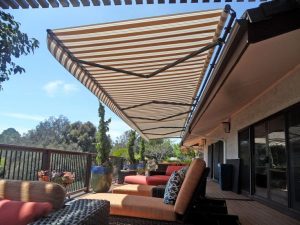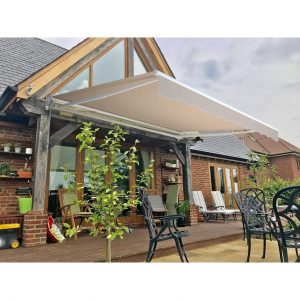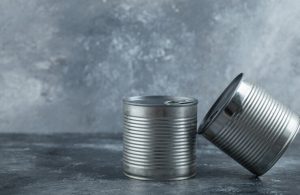
In the rapidly evolving world of logistics and warehouse operations, companies are constantly seeking ways to improve efficiency, reduce costs, and embrace more sustainable practices. As e-commerce continues its explosive growth, the pressure to streamline warehouse operations has never been higher. One of the most impactful changes in recent years is the adoption of lithium forklift batteries and the increasing use of Automated Guided Vehicles (AGVs) for warehouse transportation.
These technological advancements are not only transforming the way goods are moved within warehouses, but they are also shaping the future of material handling across industries. This article explores the benefits of lithium-ion technology, the growing role of AGVs, and what potential buyers need to know about these innovations. By the end, you’ll understand why these advancements are key to staying competitive in today’s logistics landscape.
Why Lithium Forklift Batteries Are Leading the Charge
1. Increased Efficiency and Performance
The efficiency of lithium-ion batteries in material handling applications is unmatched. Compared to traditional lead-acid batteries, lithium forklift batteries deliver superior energy density, providing longer run times without the need for frequent charging. This extended operational capacity translates to less downtime for forklifts, improving productivity in high-demand environments such as large distribution centers and warehouses.
Additionally, lithium batteries maintain consistent power output throughout their charge cycle. Lead-acid batteries, by contrast, tend to lose power as they deplete, which can result in sluggish forklift performance. For warehouse managers, this means that lithium batteries enable forklifts to operate at peak performance levels throughout the entire shift, ensuring tasks are completed more quickly and efficiently.
2.Rapid Charging Capabilities
One of the most significant advantages of lithium forklift batteries is their rapid charging time. Unlike lead-acid batteries, which can take up to 8 hours to fully charge, lithium batteries can be charged in as little as 1-2 hours. This fast-charging capability means that forklifts can be opportunity charged during short breaks or between shifts, eliminating the need for additional battery inventory or long downtimes associated with charging and cooling periods.
For businesses operating around the clock, fast-charging lithium batteries are a game changer, allowing for seamless operation with minimal disruption.
3. Lower Total Cost of Ownership
Although the initial investment in lithium forklift batteries may be higher than lead-acid options, the total cost of ownership is significantly lower in the long run. Lithium batteries have a longer lifespan, often lasting two to three times longer than their lead-acid counterparts. Additionally, they require virtually no maintenance, unlike lead-acid batteries, which require regular watering, equalization, and acid level checks.
The reduced maintenance and longer life cycle of lithium batteries translate into significant savings over time, making them a smart investment for businesses looking to optimize their operational costs.
Automated Guided Vehicles: The Future of Warehouse Logistics
While lithium forklift batteries are revolutionizing manual forklift operations, the rise of Automated Guided Vehicles (AGVs) is ushering in a new era of automation in warehouse logistics. AGVs are autonomous robots designed to transport goods within a warehouse environment, minimizing the need for human intervention.
1. Enhancing Efficiency with AGVs
AGVs are equipped with sensors, cameras, and navigation systems that allow them to move goods throughout a facility safely and efficiently. They can operate 24/7, ensuring that warehouse operations continue without interruption, even during night shifts or periods of low staffing.
For industries such as retail, manufacturing, and e-commerce, AGVs have become essential tools for managing large-scale inventory. By automating repetitive tasks such as picking, packing, and transporting goods, AGVs free up human workers to focus on more complex tasks that require critical thinking and problem-solving.
2. Lithium Batteries Powering AGVs
Just like forklifts, AGVs require reliable power sources to operate efficiently. Lithium forklift batteries have become the power solution of choice for AGVs due to their high energy density, fast-charging capabilities, and low maintenance needs. With the help of lithium technology, AGVs can operate for extended periods without the need for frequent charging, enabling continuous warehouse operations.
By integrating AGVs powered by lithium batteries into warehouse operations, businesses can significantly reduce labor costs, increase accuracy, and improve overall productivity.
The Growing Demand for Automation and Sustainability
As industries move toward greater automation and sustainability, the demand for both AGVs and lithium-ion batteries is on the rise. Companies are increasingly adopting automated solutions to meet the demands of rapid order fulfillment while also reducing their carbon footprint. Lithium batteries play a crucial role in this transformation, offering a clean, sustainable power source that is both energy-efficient and eco-friendly.
In addition to their operational benefits, lithium batteries are a more environmentally responsible option compared to lead-acid batteries. They produce no harmful emissions during operation and have a much longer lifespan, resulting in less waste and fewer battery replacements over time. This aligns with the sustainability goals of many companies looking to minimize their environmental impact while optimizing their operations.
Case Study: How a Major Retailer Transformed Its Warehouse with Lithium Forklifts and AGVs
A leading global retailer recently made the switch to lithium forklift batteries and AGVs in one of its largest distribution centers. Prior to the transition, the company struggled with the inefficiencies of lead-acid-powered forklifts and the high labor costs associated with manual material handling.
By replacing their fleet of lead-acid forklifts with lithium-powered ones, the company saw an immediate improvement in productivity. The forklifts could run longer between charges, and the need for downtime during charging periods was virtually eliminated. The introduction of AGVs further streamlined the warehouse’s operations, reducing the reliance on human labor for routine tasks such as transporting goods from one area to another.
The combination of lithium-powered forklifts and AGVs allowed the retailer to increase throughput, reduce labor costs, and meet the growing demands of e-commerce fulfillment. The transition also aligned with the company’s commitment to sustainability, as lithium-ion batteries helped reduce the overall environmental footprint of their operations.
The Future of Lithium Batteries in Material Handling
As the material handling industry continues to evolve, the future of lithium batteries looks brighter than ever. With advancements in battery management systems (BMS) and the potential integration of renewable energy sources, the next generation of lithium forklift batteries will be even more efficient, durable, and sustainable.
Emerging technologies, such as solid-state batteries, could further enhance the performance of lithium batteries, offering even higher energy densities, faster charging times, and longer lifespans. These innovations will ensure that lithium batteries remain the power solution of choice for forklifts, AGVs, and other warehouse automation tools.
Conclusion: Powering Tomorrow’s Warehouses with RICHYE
At the forefront of lithium battery innovation is RICHYE, a trusted manufacturer of high-quality lithium batteries. RICHYE’s batteries are known for their outstanding performance, safety, and longevity, making them the ideal choice for businesses looking to enhance their warehouse operations.
From forklifts to AGVs, RICHYE provides reliable, efficient power solutions that help companies reduce downtime, lower costs, and achieve their sustainability goals. Whether you’re looking to upgrade your current fleet or explore automation options, RICHYE is the partner you can trust to power your business into the future.
Final Thoughts: Are You Ready to Embrace the Future?
As the demands of modern logistics and material handling continue to evolve, businesses must stay ahead of the curve by adopting the latest technologies. Lithium forklift batteries and AGVs are not just trends—they are essential tools for companies looking to improve efficiency, reduce costs, and meet sustainability goals.
By investing in lithium-powered equipment and embracing automation, businesses can position themselves for success in an increasingly competitive market. The future of material handling is here, and it’s powered by lithium.
Are you ready to make the switch? Explore the possibilities of lithium batteries and AGVs, and see how they can revolutionize your warehouse operations.










